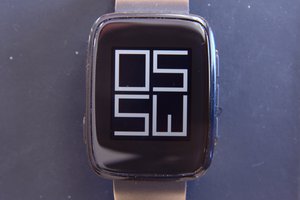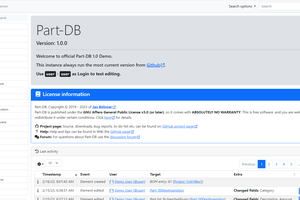To get a copy, to go our GitHub site via this handy URL: https://pcmhammer.org - then go to the Releases section and get the most recent one. You'll find the a download link for the zip file hidden under the "Assets" button below the release description.
Documentation is on the wiki at the GitHub site.
The following is current as of 2020/03/06:
Working:
- Read firmware from the PCM
- Write firmware to the PCM
- Compare PCM firmware to saved files using CRC
- Change VIN (useful for replacing a damaged PCM with one from a junkyard)
- Supports P01 and P59 PCMs
- Supports ELM-based, AVT, and J2534 interface devices
- Data logging
Needs testing:
- Support for reading and writing P10 and P12 PCMs is new, and it seems to work well, but since it's so new, there are probably some surprises lurking within. Use with caution, and please let us know if you run into any trouble.
Needs improvement:
- The collections of parameters for data logging ("Log profiles") are basically just proofs-of-concept. They should be refined further.
Potential future features:
- Support reading and writing for P04 PCMs from V6-powered cars of the same era
- Support reading and writing for E38 V8 PCMs.
Supported devices:
- ObdDiag.Net's AllPro (Featured on Hackaday)
- ObdLink ScanTool SX and LX
- AVT 852
- Most J2534 devices that support J1850 VPW
- OBDX Pro VT and GT
Credits:
Antus - He and Dimented24x7 created the first free tool for reading and writing (LS1Flash) and he contributed enormously to this one.
Dimented24x7 - For his work on LS1Flash, for sharing his disassembly of a 411 operating system, and for the first free definition (XDF) of a 411 operating system's calibration data.
NSFW - Tried to write PCM Hammer despite knowing far too little about the hardware side of things... Was rescued by everyone else listed here.
EagleMark from Gearhead-EFI.com and other forums - he contributed immensely to the LS hacking scene long before this app came about.
PeteS - He speaks J1850 VPW like a native, and tortures PCMs for sadistic pleasure. His troubleshooting and testing has been invaluable.
Tazzi - His code made it possible for PCM Hammer to support J2534 devices.
(PeteS and Tazzi are also the minds behind the OBDX Pro interface devices.)
LRT from Gearhead-EFI.com, cmaje from PcmHacking.net, and lots of others - XDF files
Gampy from PcmHacking.Net - bug fixes, testing, UI improvements
BoredTruckOwner from LS1Tech.com - collecting, sorting, organizing, and maintaining a collection of XDF files on GitHub. These were previously scattered across various forums and it's great to have a centralized place for them now.


 Ronald Vanschoren
Ronald Vanschoren
 Krzysiek
Krzysiek
 Jan B.
Jan B.
 hrkltz
hrkltz
Newbie here, got a LS7 swap into a 99 GMT400 chassis going on, looking for PCM software to tune with, maximum efficiency is the goal.